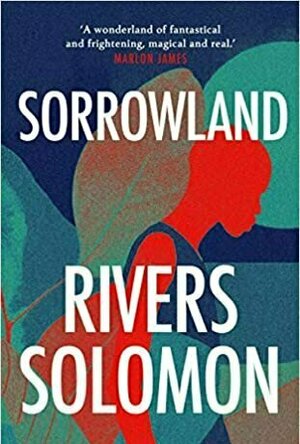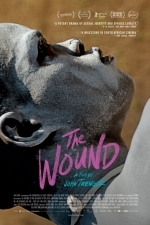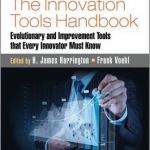
The Innovation Tools Handbook: Evolutionary and Improvement Tools That Every Innovator Must Know: Volume 2
H. James Harrington and Frank Voehl
Book
In today's fast-moving, high-technology environment, the focus on quality has given way to a focus...
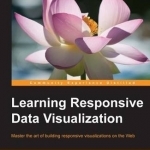
Learning Responsive Data Visualization
Book
Master the art of building responsive visualizations on the Web About This Book * Learn the...
Melanie Caldicott (6 KP) rated Sorrowland in Books
Apr 29, 2021
Sorrowland is a genre-bending book which is like nothing I have ever read before and probably ever will again!
The story centres around Fern, an albino black teenage girl who gives birth to twins, Howling and Feral in the woods after escaping from a cult called Cainland. What follows is a mindboggling adventure surrounding her survival.
This is a coming of age story like no other – part sci-fi, part horror, part dystopian, part magical realism, this book defies genre. But amongst all the myriad of twists and turns this novel takes, what lies at the heart of it is a story about a girl who comes to understand her identity and rises above what has been spoken over her in her past.
During Fern’s journey of self-discovery the book examines themes such as racism, indoctrination, abuse and misogyny. There are many challenges in reading this book as we encounter a dystopian world that is disturbingly similar to our own exploring those who live on the fringe of society due to white domination. This not only includes Cainland, the cult set up by black people originally to challenge the white belief system, but also native American characters who quietly hold onto their truth in a far less bigoted and twisted way.
I love the big questions this book asks and the twisted paths it takes in asking them leading you into such unknown territories through the plot that you meet these issues head on in such different ways that you confront them anew and reexamine how you really feel about them and the impact that they have on our world.
Sorrowland is compelling and, although this would never be a genre I would normally read, I enjoyed the enigmatic nature of the evolving fantastical storyline and the constant surprises Rivers Solomon weaves into the plot. It is extremely well-written, with powerful characterisation, rich with poetic descriptions and intelligent themes.
However, the aims of the book seem to get a little muddled at times and I became confused about what Solomon wanted me to get out of the book. The story becomes so fast-paced and dense at times that this prevented me from taking a step back and truly immersing myself in the deeper themes of the novel.
This is a hard book to review. As I said, not something I would normally read, but the quality of the writing won me over. That said, I did not come away from the book feeling a sense of enjoyment, but instead, unsettled and disturbed by encountering a story of brutality with wild, savage characters and a frightening world where nothing is as it seems.
I would recommend this book – purely because you will be changed by it and this is one of the most powerful gifts of literature – but it is not a comfortable read and would not suit everyone.
Thanks to the publishers and NetGalley for the ARe-copy in exchange for this honest review.
Darren (1599 KP) rated The Wound (2017) in Movies
Jun 25, 2019
Xolani gets to see his own secret lover Vija (Mantsai) who is also performing an initiation, but the two men get to return to their forbidden ways. As the initiation continues Kwanda must learn just what this means to the other young men, as Xolani must keep his own secret from everybody else.
Thoughts on The Wound
Characters – Xolani is a factory worker who knows his roots through an initiation process for teenagers to become men, he has returned to be a ‘caregiver’ to his initiate, he gets to rekindle a forbidden love with a married man, which they must keep secret, even if this is the highlight of his life. Vija is a married man who is also a ‘caregiver’, he is much stricter than Xolani and is a lover of his, he knows just how forbidden their love is and will go after anyone who gets in their way. Kwanda is a rich kid that is going through this initiation, he does question the process which puts his position in danger.
Performances – Nakhane Toure is wonderful in the leading role, showing us the commitment to his character has for this love. Bongile Mantsai and Niza Jay in the supporting roles are both brilliant too, which is a completely well acted film throughout.
Story – The story here shows an initiation being performed on teenager boys as they become young men, it takes them away from their family’s and leaves them in the care of a man known as a ‘caregiver’ who helps heal the wound, we have two caregivers that are involved in a gay relationship, which they can only have on these events who have very different lives away from the initiation. This does show us how a culture treats their young men, which shouldn’t be a practised in this modern world. we do get to deal with forbidden romance, in a culture that doesn’t accept homosexual relationships. By having two major world issues going on, it shows us how the country is just as happy to sweep them under the rug, rather than learn to accept them, which is interesting to see,
Romance – The romance side of the story shows the love two men can have, only for a short time, only if nobody else knows, in a culture that isn’t ready to accept them.
Settings – The film is set in a mountain range in South Africa, this location is where the people go every year for the initiation.
Scene of the Movie – Mountain top.
That Moment That Annoyed Me – Its not an easy subject matter when you look at the initiation process.
Final Thoughts – This is a very interesting movie showing us how forbidden love between two men can be in a culture that still practises a form of gender mutilation.
Overall: Culture shock.
https://moviesreview101.com/2019/06/24/abc-film-challenge-world-cinema-x-the-wound-2017/

Juventus Fantasy Manager 2018
Games and Sports
App
JUVENTUS FANTASY MANAGER 2017-BE THE BOSS: the new edition of the MOST ADDICTING FOOTBALL mobile...

Pinball HD (iPhone) Classic Arcade,Zen,Space Games
Games and Sports
App
This unique table features pinball bumpers and targets, plus a color monitor where you can take on a...
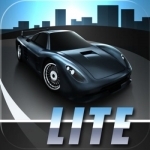
Fastlane Street Racing Lite - Driving With Full Throttle and Speed
Games
App
⋆⋆⋆⋆⋆⋆⋆Fastlane Street Racing is back – with 3D HD Graphics!⋆⋆⋆⋆⋆⋆⋆⋆...

BUX - Easy Stock Trading
Finance and Social Networking
App
Stock trading made exciting for everyone! Dive into the world of trading with BUX and discover the...
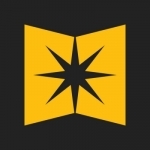
Bible Study Tools
Lifestyle and Education
App
The BibleStudyTools.com Bible app gives you free access to the largest library of study Bible...

The Extraordinary Leader: Turning Good Managers into Great Leaders by John Zenger & Joseph Folkman
Business and Book
App
This free sample contains the first chapter and access to the full book requires an in-app purchase...
